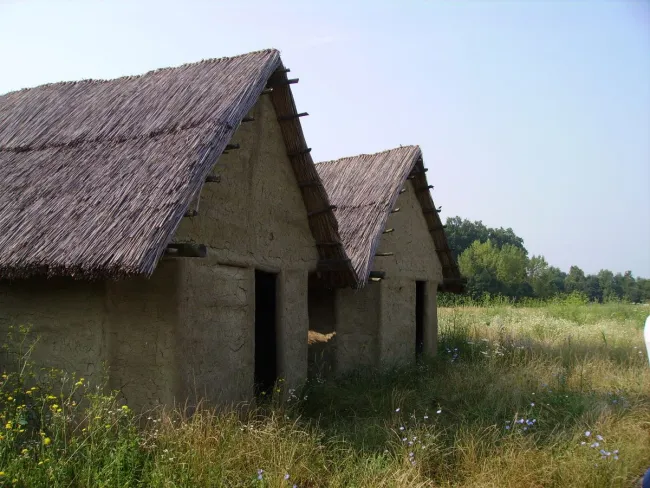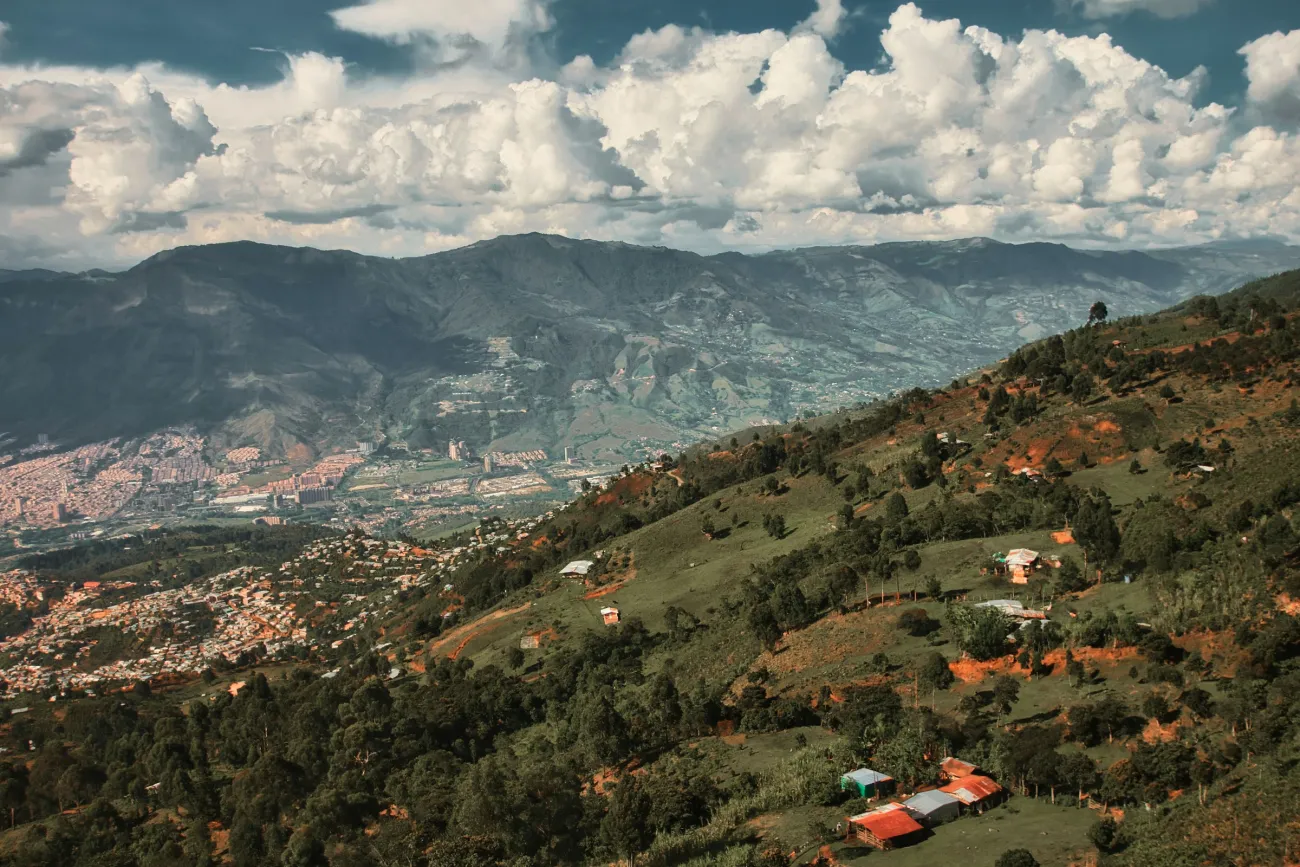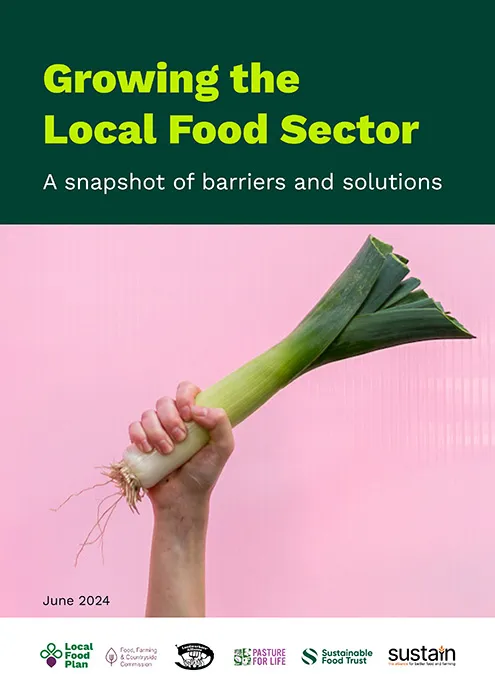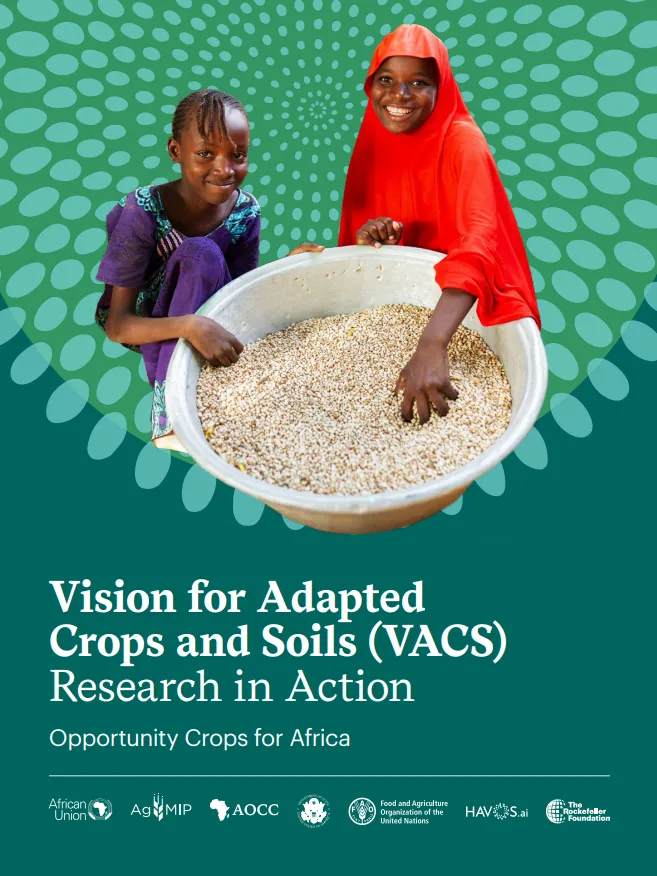Dr Kelly Reed is an archaeobotanist with interests in food systems, agricultural development and cultural adaptations to environmental change in the past. She is currently the programme manager for the Oxford Martin Programme on the Future of Food and the Wellcome Trust-funded Livestock, Environment and People (LEAP) project based at Oxford University.

Image: Kelly Reed, Reconstructed Neolithic house at Sopot, Croatia
The world we inhabit today has changed dramatically since we first began farming thousands of years ago. Yet the challenge to provide food security to all is not new and has been a common struggle throughout our past. By looking back, we can see how things have developed and use our knowledge to think in different ways and open up new possibilities for the future of our food system.
This blog starts at the beginning, when early immigrant farmers moved into Europe from southwest Asia, gradually replacing and assimilating mobile hunter-gatherers who lived in this region. A new sedentary farming lifestyle provided greater control and stability over food supplies, which in turn allowed people to have more children and join together in larger, denser communities. This global movement allowed for demographic expansion of people across the globe, the formation of denser villages and eventually cities, and ultimately the accumulation of wealth and the formation of political and craft specialties. These features enabled the development of early states and empires, which engaged in increasingly more complex food procurement activities at varying scales across the globe.
How did the advent of farming change the scale of food production in Europe?
Agriculture originated in several small hubs around the world. The earliest started in the Fertile Crescent, a region of southwest Asia that includes parts of modern-day Iraq, Syria, Lebanon, Israel, and Jordan. The factors that drove people to first settle in one place and then more intensively focus on a few wild resources is widely debated, but between 15,000 and 12,000 years ago early Natufian people started to adopt a handful of key behaviours, notably sickle harvesting, grain grinding, seed saving, seed sowing, and tilling (e.g. Arranz-Otaegui et al. 2018). These pre-domesticated cultivation practices, gradually, over several millennia, pushed evolutionary changes in certain plants and animals. From 11,000 years ago a ‘Neolithic package’ – domesticated crops and livestock, tools for food preparation, and villages – emerged and gradually spread across Europe, taking at least 4,000 years to reach its northern limit in Scandinavia.
Hunter-gatherer populations today, as in the past, have always maintained very small and relatively mobile groups; they also tend to consume hundreds of different edible plants on a seasonal basis. To acquire enough food some ethnographic studies have shown that groups can travel across an area of as much as 200 km2 in a single year (Kaplan et al. 2000). Although the archaeological record shows evidence of seasonal settlements and even storage (de Saulieu and Testart 2015), these seasonal migrations would have made people less inclined to invest heavily in building homes or inventing/creating different types of tools and heavy crafts. Most crafts would need to be disassembled, cached, or abandoned; only small possessions could be carried. Archaeologically, ceramic pottery was first developed in the Fertile Crescent around 6400BC, well after the development of complex farming systems and the evolution of domestication traits in plants and animals.
Neolithic farmers, in contrast, seemed to take responsibility for “making” their environments, by burning fields and turning over the soil. The earliest crops (e.g. wheat, barley, lentils, and peas) evolved to lose their wild seed-dispersal abilities and to rely more closely on humans to save their seeds to plant the following year. Likewise, manipulation of mating practices in livestock species (cattle, sheep, and pigs) led to shifts in their genetics as well. While this dependence meant that they were highly susceptible to natural disasters, pests and diseases, when all the stars aligned, agriculture was far more productive, with greater yields per area of land than could be achieved through hunting and gathering. Growing domesticated crops also only required a relatively small area of land to be cultivated. Some estimate that with early European Neolithic wheat-farming methods, one hectare of land could have produced over two-thirds of the calories required to feed a family of five for a year (Bogaard 2004, table 2.2). Smil (2000; Figure 1.2) also estimates that shifting and traditional farming could support two more people per km2 than foraging. (Note that modern farming can support thousands of time more people per km2 than foraging). This more localised food production allowed the development of permanent villages and agricultural structures, such as animal pens, as well as technologies, such as ploughs, that in turn allowed greater crop yields and more intensive selective pressures on the crops, forcing them to evolve further. The greater yields of food and the more productive crop species meant that there was more food available to feed children and parents opted to produce larger families.

Domesticated barley crop. Image credits: stux, "Wheat Crops Barley", Pixabay, Pixabay Licence
What do we know about the scale of early farming in Europe?
As archaeologists, our understanding of early farming communities is based on the few physical objects that have preserved over many millennia and a whole heap of assumptions that we make about human behaviour. We do not uncover every item that ancient people used, and we can only imagine what they thought about that item when we do. That said, the emergence of numerous scientific techniques and the continued discovery of artefacts and human activities (e.g. burials, building monuments and villages) continue to expand our understanding of what our ancestors may have been up to.
If we look at archaeobotanical evidence, in particular weeds that grow in crop fields, we can discern that Neolithic cultivation in Europe was generally permanent rather than shifting, with intensive tillage, fertilised (with animal manure), and sown with both autumn- and spring-sown crops; although, variations in agricultural methods are seen archaeologically. From palynological (pollen) studies we see how the scale of farming expanded over the first millennium after farming communities move into a region, often causing extensive landscape alterations and woodland clearances, probably to make way for more animal pastures (e.g. Magyari et al. 2011). Tell-type settlements also emerged in central and southeast Europe showing continuous occupation of a site for several millennia in some instances, with successive generations building on top of each other.
Faunal analysis suggests small-scale, mixed-purpose (e.g. meat, fibre, drought) animal husbandry was practised, more or less closely tied to arable land. Analysis of animal stable isotopes and archaeobotanical data is providing details about local grazing patterns, indicating that some people chose to graze livestock near the home all year round, while others practiced transhumance – the movement of livestock from one grazing ground to another in a seasonal cycle (e.g. Kamjan et al. 2020; Valamoti 2007).
Permanent settlements and local cultivation also allowed for the storage of surplus grains and other food stuffs that would have been a key strategy for withstanding any environmental disasters or social strife (e.g. Bogaard et al. 2009). From the onset of farming in Europe we find both communal and household storage pits and vessels, which probably indicated different scales of control over food supplies, i.e. grain controlled by households, permitting hoarding on the domestic level (Halstead 1995).
Was Neolithic farming a localised activity?
Although much of the Neolithic food system was probably local, not all settlements across Europe had access to the same resources. Thus, eventually, after the development of wealth accumulation systems, regional trading networks developed to source goods, creating the first commerce. For example, grinding stones, that were frequently found within Neolithic houses to grind cereal grain and other food plants, have been traced to regions of up to 200 km away to meet local deficiencies in good stone (Robb and Farr 2005; Runnels 1985).
The adoption of agriculture was also key in freeing up numerous people in the community, who could specialise and evolve other crafts. Thus, being sedentary in permanent settlements allowed more and more goods to be produced and greater opportunities for trade and exchange with neighbouring communities. One impact of this would have been the evolution of the idea of ownership. As farmers invested a great deal of their time and energy into cultivating specific areas of land, in building permanent structures and creating a wide range of tools and objects, some began to possess more than others, creating social inequalities. As villages and society grew, codes of conduct would also have been needed to mediate between different people and to govern these newly emerging agricultural territories.
By looking back on early food systems, we see how social changes within these early farming communities took the form of small-scale modifications and transformations that were uneven and highly localised, which varied both spatially and temporally. In contrast to hunter gatherers, this early farming way of life was generally a localised food system, but there is still evidence of trade and exchange that integrated communities within wider regional networks.
Join the discussion by sending a message to our Google Group (join the group first here).
References
Arranz-Otaegui, A., Gonzalez Carretero, L., Ramsey, M.N., Fuller, D.Q., Richter, T. 2018. Archaeobotanical evidence reveals the origins of bread 14,400 years ago in northeastern Jordan. Proceedings of the National Academy of Sciences 115 (31): 7925-7930; http://doi.org/10.1073/pnas.1801071115
Bogaard, A. 2004. Neolithic Farming in Central Europe: An Archaeobotanical Study of Crop Husbandry Practices c5500–2200 BC. Routledge
Bogaard, A., Charles, M., Twiss, K.C., Fairbairn, A., Yalman, N., Filipović, D., Demirergi, G.A., Ertuğ, F., Russell, N., Henecke. J. 2009. Private Pantries and Celebrated Surplus: Storing and Sharing Food at Neolithic Çatalhöyük, Central Anatolia. Antiquity 83: 649–668. http://doi.org/10.1017/S0003598X00098896
de Saulieu, G. Testart, A. 2015. Innovations, food storage and the origins of agriculture, Environmental Archaeology 20(4): 314-320, http://doi.org/10.1179/1749631414Y.0000000061
Halstead, P. 1995. From Sharing to Hoarding: The Neolithic Foundations of Aegean Bronze Age Society. In: R. Laffineur and W.-D. Niemeier (eds.), Politeia: Society and State in the Aegean Bronze Age. Aegeum 12. Université de Liège, pp. 11–20.
Kamjan, S., Gillis, R.E., Çakirlar, C., Raemaekers, D.C.M. 2020. Specialized cattle farming in the Neolithic Rhine-Meuse Delta: Results from zooarchaeological and stable isotope (δ18O, δ13C, δ15N) analyses. PLoS ONE 15(10): e0240464. https://doi.org/10.1371/journal.pone.0240464
Kaplan, H., Hill, K., Lancaster, J., Hurtado, A.M. 2000. A theory of human life history evolution: diet, intelligence, and longevity. Evolutionary Anthropology 9:156–185
Magyari, E., Chapman, J., Fairbairn, A.S., Francis, M., de Guzman, M. 2012. Neolithic human impact on the landscapes of North-East Hungary inferred from pollen and settlement records. Vegetation History and Archaeobotany 21 (4-5): 279-302.
Robb, J.E. and Farr, H.R. 2005. Substances in motion: Neolithic Mediterranean “Trade”. In: E. Blake and A. Bernard Knapp (eds.), The Archaeology of Mediterranean Prehistory. Blackwell Publishing, pp. 24-46.
Runnels, C.N. 1985. Trade and the demand for millstones in Southern Greece in the Neolithic and the Early Bronze Age. In: A.B. Knapp and T. Stech (eds.), Prehistoric Production and Exchange: The Aegean and Eastern Mediterranean. Institute of Archaeology, UCLA, pp. 30–43.
Smil V. 2000. Feeding the World: A Challenge for the Twenty-First Century. MIT Press, Cambridge, MA.
Valamoti, S.M. 2007. Detecting seasonal movement from animal dung: an investigation in Neolithic northern Greece. Antiquity 81: 1053-1064




Comments (0)